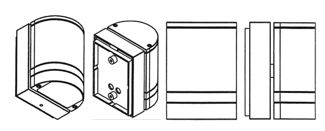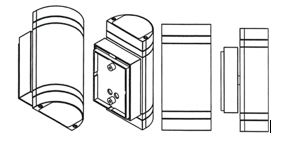September 27, 2021
Facts
Lutec (UK) Ltd issued proceedings against Cascade Holdings Ltd for infringement of two registered Community designs (RCDs), which became UK equivalent registered rights following the end of the Brexit transition period on 1 January 2021, were filed on 5 June 2006 and listed “exterior lights” as the product to which they were to be applied:
RCD (i):

; and
RCD (ii):

Lutec alleged that Cascade’s Helios Up Or Down light (Helios U/D) infringed RCD (i) and that its Up And Down light (Helios U&D) infringed RCD (ii):
Helios U/D:

Helios U&D:

Cascade accepted that the designers of the RCDs had a very considerable degree of design freedom when developing the designs at the date of application. Therefore, the only issues were infringement.
Decision
The parties disagreed over what the images in the RCDs showed and therefore what was claimed as part of the protected designs. Cascade argued that there was no surface decoration in the RCDs, which were essentially line drawings, such that the blank spaces were, in effect, a claim to absence of surface decoration. In Cascade’s view, therefore, the ridged surface of the Cascade products produced a very different overall impression on the informed user.
Considering the authorities on line drawings in registered designs, including the Supreme Court decision in PMS International Group plc v Magmatic Ltd ([2016] UKSC 12 (the Trunki case) and the subsequent Court of appeal decision in Pulseon Oy v Garmin (Europe) Ltd [2019] EWCA Civ 138 and others, David Stone, sitting as a Deputy High Court Judge, said that it would be a very unusual case in which a line drawing in a registered design claimed an absence of surface decoration, and that in his judgment this was not such a case.
Mr Stone interpreted the RCDs as a claim to shape, depicting the overall shape of two exterior lights. Of the non-exhaustive list of “features” of the appearance of a design, as set out in the Community Design Regulation (6/2002/EC), the images showed only the lines, contours and shape, and did not show the colours, texture or materials of the product, or its ornamentation. In Mr Stone’s view, the parallel lines curving around the light casing delineated the different parts of the product and were not the only ornamentation shown. He also noted that there was no description accompanying the design image stating that an absence of surface decoration was claimed.
Mr Stone applied the six-stage test from Cantel Medical (UK) Ltd v ARC Medical Design Ltd [2018] EWHC 345 (Pat) to assess overall impression on the informed user in order to decide on infringement.
It was not in dispute that the sector was outdoor lights and the informed user was “a member of the general public who is interested in purchasing outdoor light fittings for home and/or business premises”.
No features of the RCDs were dictated solely by technical function and the considerable degree of freedom of an outdoor light designer, which was not in dispute, had the effect of requiring an allegedly infringing design to be further away from the registered design in order not to infringe, when compared to a product the designer of which has limited design freedom. Therefore, Cascade accepted that the RCDs were entitled to a wide scope of protection.
Mr Stone noted that both in the RCDs and the Helios products, the light itself was a separate element to the base or box by which the light was attached to the wall. Mr Stone accepted that the informed user would assess the design in the light of how it was used. Both the RCDs and the Helios products had attaching mechanisms on the rear of the base that indicated clearly that the light should be attached to a wall. Once attached, it was the front of the light that would be most visible and that was the part of the design to which the informed user would pay the most attention. Therefore, it was the differences in those parts of the design that would most strike the informed user.
Taking into account the sector in question, the designer’s degree of freedom and the similarities and differences between the Helios products and the RCDs, Mr Stone assessed the overall impression. He found that, as the RCDs made no claim to texture or materials, the ridging in the Helios products did not constitute a difference. Further, some of the differences submitted by Cascade were difficult to ascertain on a close inspection of the products side by side with the RCD images and were not apparent. If these differences existed at all they were not such as to make a difference to the overall impression produced on the informed user. The same was true of the one difference that Mr Stone agreed had been made out, as it was only a minor difference.
In Mr Stone’s judgment, the features of the Helios products that would strike the informed user were those of the light housing, i.e., the features that would be most visible once the light was installed. The box at the back would be seen by the informed user as of less importance, and whilst the differences might register with him/her, they would not be such as to produce on such an informed user a different overall impression. This finding was reinforced by Cascade’s concession that the RCDs were entitled to a wide scope of protection.
Standing back, in Mr Stone’s judgment, the Helios U/D infringed RCD (i) and the Helios U&D infringed RCD (ii). (Lutec (UK) Ltd v Cascade Holdings Ltd [2021] EWHC 1936 (IPEC) (9 July 2021) — to read the judgment in full, click here).
Expertise